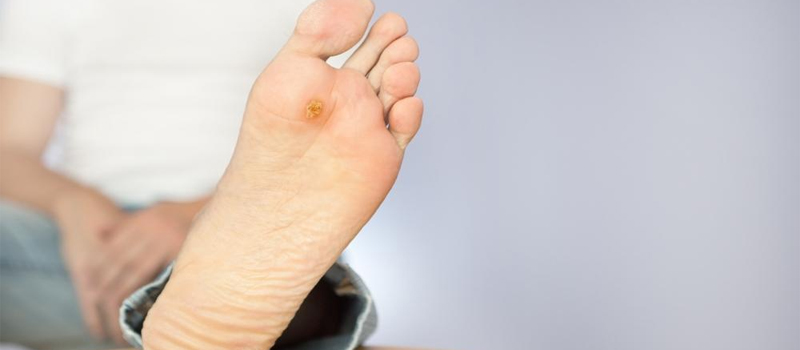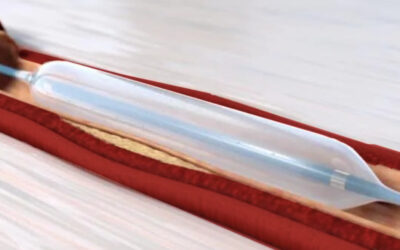Foot ulcers are a major complication of diabetes and peripheral artery disease (PAD). About 30% of people with diabetes develop neurotrophic ulcers at some point. PAD can reduce blood circulation to your extremities, leading to the development of arterial ulcers.

The ulcers present as open sores that form due to the breakdown of skin and tissues in your foot. They usually take a long time to heal and can become infected. This serious condition requires prompt attention to prevent toe amputations.
Healing requires a multidisciplinary approach to avert the progression of the condition. With proper care, it can take several weeks to months to heal. This article covers what you should expect from your treatment plan and healing process.
Overview of the Treatment Stages for Foot Ulcers
Your primary healthcare provider can diagnose the type of ulcer based on several observations following a CT, MRI, or X-ray scan. In most cases, you will need to see a podiatrist or vascular wound specialist for treatment. The primary goal of treating a toe ulcer is to prevent infection, heal the wound, and relieve pain.

You will undergo personalized treatment based on the stage of the ulcers and the condition causing them. Typically, the plan involves antibiotic treatment, wound dressing, relieving pressure from the wound. In some advanced cases, surgery to remove infected tissue can be highly beneficial.
Antibiotics
If your ulcer shows evidence of infection, your doctor will clean the wound thoroughly and remove all infected tissue. This step is known as debridement and helps the wound heal faster.
Your doctor then prescribes an antibiotics course, which can range from one to six weeks, based on the severity of the infection. You will be required to take the antibiotics until the infection shows signs of clearing.

Wound Dressing
The doctor will use wound dressings to minimize infection risk, prevent further trauma, and relieve pain. The dressings also create an optimal environment for healing. Different types of dressing are used to heal foot ulcers. These include hydrogel dressings, absorptive fillers, and hydrocolloids.
Pressure Removal
Relieving pressure on the ulcer by taking weight off the affected foot has shown to be effective in healing toe ulcers. Your doctor will use a specially designed cast known as a Total Contact Casting (TCC). The cast encases your entire lower leg, redistributing the weight from your foot to your lower limb during everyday activities.
This stage helps protect the wound, enabling the tissues to regenerate and heal. Your doctor may also recommend other pressure relief methods. These include crutches, orthopedic shoes, walkers, or even bed rest.
The Wound Healing Process
Regardless of the underlying cause of a foot ulcer, your recovery depends on your body healing itself. This complex process takes longer than you might think. Generally, your foot ulcer heals in four stages.

The first stage is stopping any bleeding, whereby your body builds membranes around the wound. Depending on the severity of the ulcers, this process can take anywhere from minutes to a few days.
The next stage involves filling the gap left by the wound. Your body first fills the gap with a specialized generic tissue. This tissue is stronger than the initial membranes. At this stage, new blood vessels and nerves grow around the tissue.
The third stage is when the gap shrinks significantly. After normal blood flow resumes, a new type of tissue replaces the generic tissue. This tissue is considerably stronger and has better access to nutrients and oxygen. It bonds to the ends of the wound, pulling the edges together. On your skin, it manifest as changes in the color and size of scar tissue.
The final healing stage is when the original tissue returns. New cartilage and skin can grow at the site of the ulcer. The wound is considered fully healed and your foot can resume its original functionality. Note that addressing the underlying cause of the foot ulcers is also a crucial part of the treatment plan and healing process.
Conclusion:
A foot ulcer is not a problem you want to overlook. If untreated, it can lead to complications and lower leg amputations. Seeking medical attention is important since they may indicate underlying cardiovascular conditions like diabetes, PAD, deep vein thrombosis, and more.

If you are struggling toe ulcers, Washington Vascular Specialists is here for you. Our friendly wound specialists have managed and treated numerous cases and the responsible conditions. Contact us today or schedule an appointment and have one of our cardiovascular experts tend to you.



